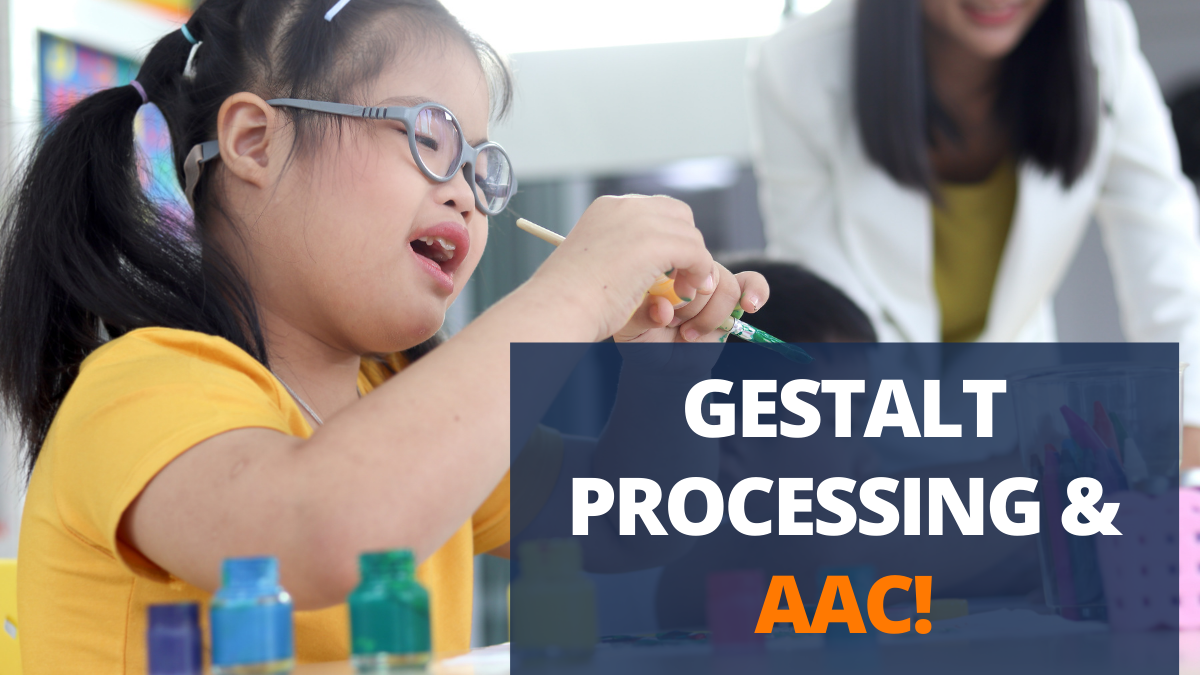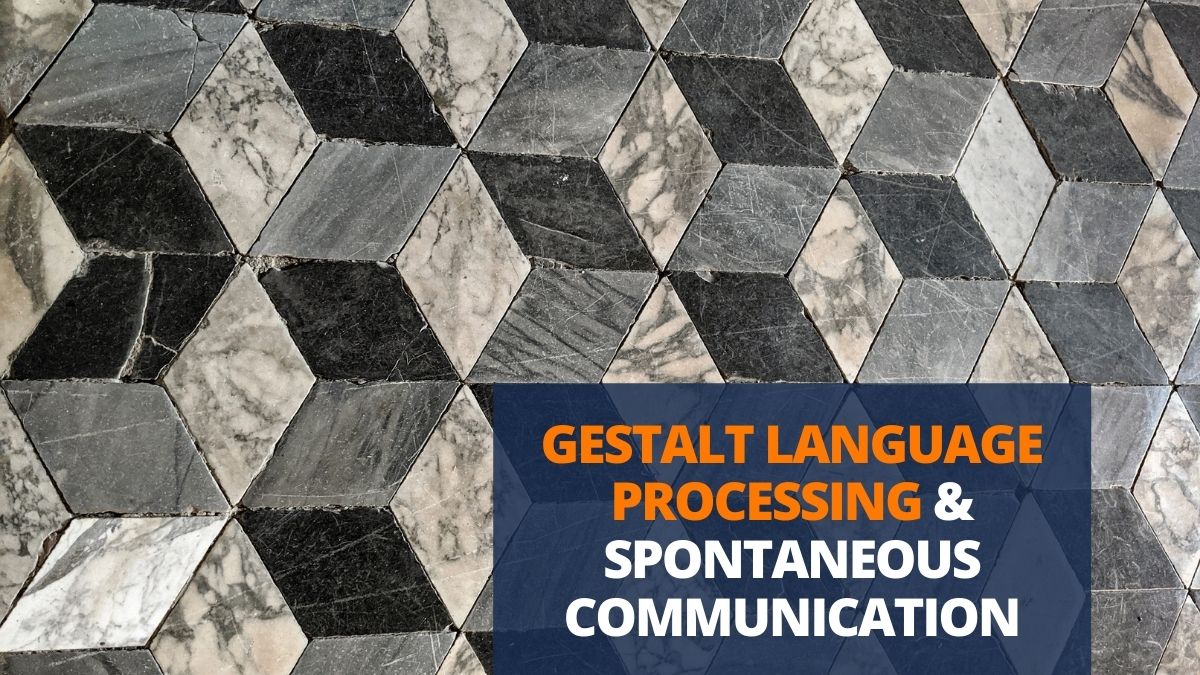Gestalt language processing (GLP) has emerged as a revolutionary approach to language understanding, challenging traditional analytical methods. GLP emphasizes the holistic processing of language, considering the context and relationships between words and phrases.
This approach has opened up new possibilities in natural language understanding, machine translation, and dialogue systems, leading to more accurate and nuanced language processing.
Definition and Overview: Gestalt Language Processing
Gestalt language processing (GLP) is a cognitive approach to language processing that emphasizes the importance of perceiving language as a whole, rather than as a collection of individual elements. GLP researchers argue that the brain processes language in a holistic manner, and that the meaning of a word or phrase is determined by its context and the overall structure of the utterance.
GLP is based on the Gestalt principles of perception, which state that the brain organizes sensory information into meaningful wholes. These principles include the laws of similarity, proximity, good continuation, and closure. The law of similarity states that objects that are similar in appearance are perceived as belonging together.
The law of proximity states that objects that are close together are perceived as belonging together. The law of good continuation states that objects that are aligned with each other are perceived as belonging together. The law of closure states that objects that are incomplete are perceived as complete.
These principles have been applied to language processing in a number of ways. For example, GLP researchers have shown that people are more likely to perceive a group of words as a sentence if the words are similar in meaning, if they are close together, and if they are aligned with each other.
GLP researchers have also shown that people are more likely to perceive a word as a noun if it is preceded by an article, and more likely to perceive a word as a verb if it is followed by an object.
GLP has been used to explain a wide range of language processing phenomena, including speech perception, reading, and writing. GLP has also been used to develop new methods for teaching language and for treating language disorders.
Key Characteristics of GLP
Gestalt language processing (GLP) stands out from other approaches to language processing due to its distinctive characteristics. GLP emphasizes holistic processing, considering language as a unified whole rather than a collection of isolated elements. It also places great importance on context dependency, recognizing that the meaning of a word or phrase can vary depending on the surrounding context.
Unlike analytical approaches that focus on breaking down language into individual components, GLP takes a more comprehensive view. It considers the interplay between different elements of language, such as syntax, semantics, and pragmatics, to derive meaning from the text as a whole.
This holistic approach allows GLP to capture the nuances and complexities of human language that may be missed by more reductionist methods.
Context Dependency
GLP places a strong emphasis on context dependency, acknowledging that the meaning of a word or phrase is not fixed but rather can change depending on the surrounding context. This context can include both the linguistic context (e.g., the preceding and following words) and the situational context (e.g.,
the speaker’s intention, the audience, and the setting). GLP algorithms take into account these contextual factors to determine the most appropriate interpretation of a given word or phrase.
Applications of GLP

Gestalt language processing (GLP) has been successfully applied in various areas of natural language processing, including natural language understanding, machine translation, and dialogue systems.
In natural language understanding, GLP has been used to improve the accuracy of text classification, sentiment analysis, and question answering systems. For example, GLP has been used to develop a text classification system that can accurately classify news articles into different categories, such as politics, sports, and business.
Machine Translation
In machine translation, GLP has been used to improve the quality of translations by taking into account the context of the input text. For example, GLP has been used to develop a machine translation system that can translate English text into Spanish while preserving the meaning of the original text.
Dialogue Systems
In dialogue systems, GLP has been used to improve the ability of systems to understand and respond to user queries. For example, GLP has been used to develop a dialogue system that can answer questions about a specific topic, such as the weather or a particular product.
Methods and Techniques in GLP
Gestalt language processing (GLP) employs various methods and techniques to achieve holistic language understanding. These include graph-based representations, clustering algorithms, and semantic analysis, which contribute to capturing the relationships and meaning within language.
Graph-based Representations
GLP utilizes graph-based representations to model the relationships between words, phrases, and concepts within a text. These graphs capture the hierarchical structure and dependencies present in language, allowing for a comprehensive analysis of the text’s content.
Clustering Algorithms
Clustering algorithms are employed in GLP to group similar words or concepts together based on their semantic relatedness. This helps identify patterns and extract meaningful insights from the text by organizing its content into coherent clusters.
Semantic Analysis
Semantic analysis in GLP involves techniques like word sense disambiguation and semantic role labeling to determine the precise meaning of words and their relationships within a sentence. This enables GLP to understand the intended meaning of the text, even in the presence of ambiguity or multiple interpretations.
Challenges and Limitations of GLP
Despite its potential, GLP faces certain challenges and limitations that hinder its widespread adoption and effectiveness.
One significant challenge is computational complexity. GLP requires extensive computational resources to process and analyze large volumes of unstructured text data. This can be particularly demanding for real-time applications or when dealing with massive datasets.
Data Requirements
Another limitation lies in the data requirements of GLP. It heavily relies on large and diverse datasets to train and evaluate models. Acquiring, cleaning, and annotating such datasets can be time-consuming and expensive.
Addressing the Challenges
Addressing these challenges requires ongoing research and advancements in computational techniques and data management strategies. For example, distributed computing and cloud-based solutions can help alleviate computational bottlenecks. Additionally, exploring techniques for data augmentation and synthetic data generation can mitigate the need for extensive manual annotation.
Comparison with Other Language Processing Approaches
GLP differs from other language processing approaches in several key ways. Rule-based systems rely on manually crafted rules to process language, while GLP leverages patterns and gestalt principles to derive meaning. Statistical models use statistical techniques to identify patterns in language, but GLP emphasizes the holistic interpretation of language rather than focusing solely on statistical probabilities.
Deep learning models, particularly transformer-based models, have achieved impressive results in various NLP tasks. However, GLP offers a distinct advantage in its ability to capture the gestalt of language, considering the context and relationships between words and phrases.
Strengths of GLP
- Holistic understanding of language
- Ability to capture gestalt principles
- Robustness to noise and errors
Weaknesses of GLP
- Can be computationally expensive
- May not be suitable for all NLP tasks
- Limited availability of pre-trained models
Future Directions and Research Trends in GLP

Gestalt language processing (GLP) is a rapidly evolving field, and there are many exciting future directions and research trends to explore. One important area of research is the development of more efficient algorithms. Current GLP algorithms can be computationally expensive, and there is a need for more efficient algorithms that can be used to process large amounts of text data in real time.
Another important area of research is the exploration of new applications for GLP. GLP has the potential to be used in a wide variety of applications, such as machine translation, natural language understanding, and information retrieval. Researchers are exploring new ways to use GLP to solve real-world problems.
Advancements in Algorithms
One of the most important future directions in GLP is the development of more efficient algorithms. Current GLP algorithms can be computationally expensive, and there is a need for more efficient algorithms that can be used to process large amounts of text data in real time.
One promising approach is to develop parallel algorithms that can be run on multiple processors. Another promising approach is to develop incremental algorithms that can process data in a streaming fashion.
New Applications of GLP, Gestalt language processing
Another important future direction in GLP is the exploration of new applications. GLP has the potential to be used in a wide variety of applications, such as machine translation, natural language understanding, and information retrieval. Researchers are exploring new ways to use GLP to solve real-world problems.
For example, GLP is being used to develop new methods for machine translation that can produce more accurate and fluent translations. GLP is also being used to develop new methods for natural language understanding that can better understand the meaning of text data.
And GLP is being used to develop new methods for information retrieval that can more effectively find relevant information from large amounts of text data.
Expected Impact on Language Processing
The advancements in algorithms and the exploration of new applications are expected to have a significant impact on the future of language processing. More efficient algorithms will make it possible to process large amounts of text data in real time, which will open up new possibilities for applications such as machine translation, natural language understanding, and information retrieval.
And the exploration of new applications will lead to new ways to use GLP to solve real-world problems.
Epilogue

GLP continues to be an active area of research, with ongoing advancements in algorithms and applications. As the field evolves, GLP is poised to play an increasingly significant role in the future of language processing, enabling deeper and more comprehensive interactions between humans and machines.
Expert Answers
What is the key difference between GLP and traditional language processing approaches?
GLP emphasizes holistic processing, considering the context and relationships between words and phrases, while traditional approaches focus on analyzing individual elements of language.
What are some applications of GLP?
GLP has been successfully applied in natural language understanding, machine translation, and dialogue systems, enhancing accuracy and nuance in language processing.
What are the challenges associated with GLP?
GLP faces challenges such as computational complexity and data requirements, which can be addressed through ongoing research and advancements in algorithms.